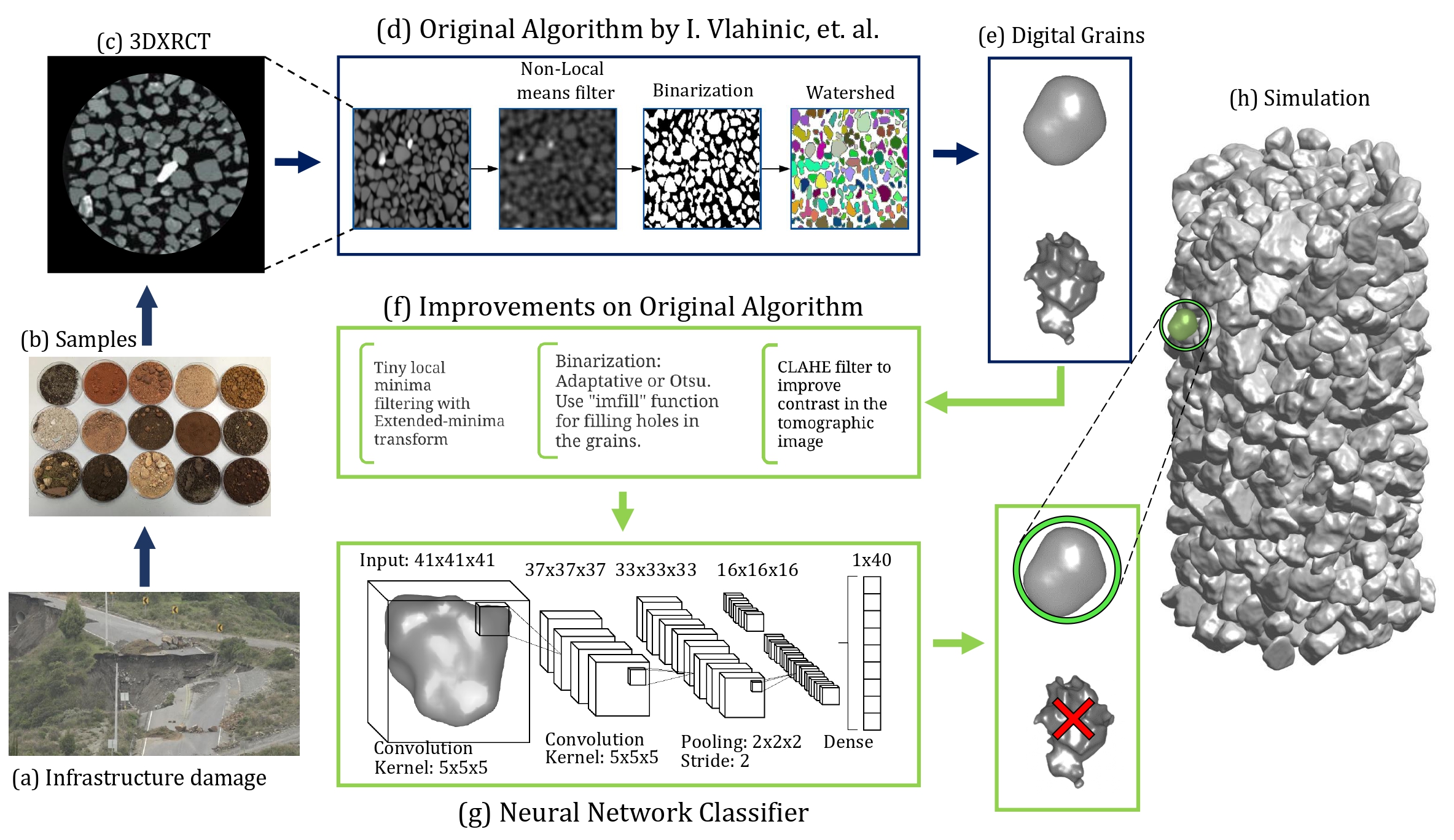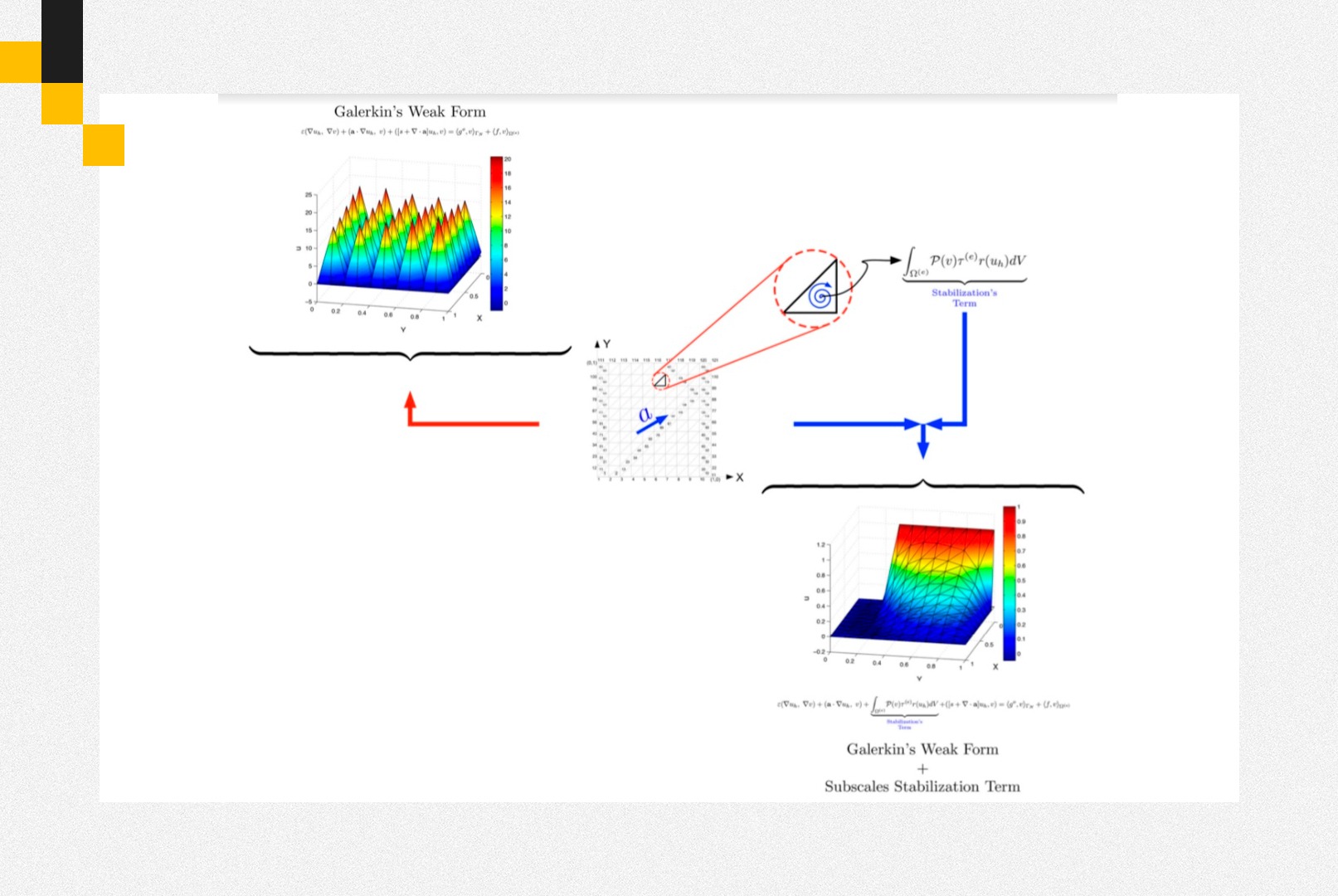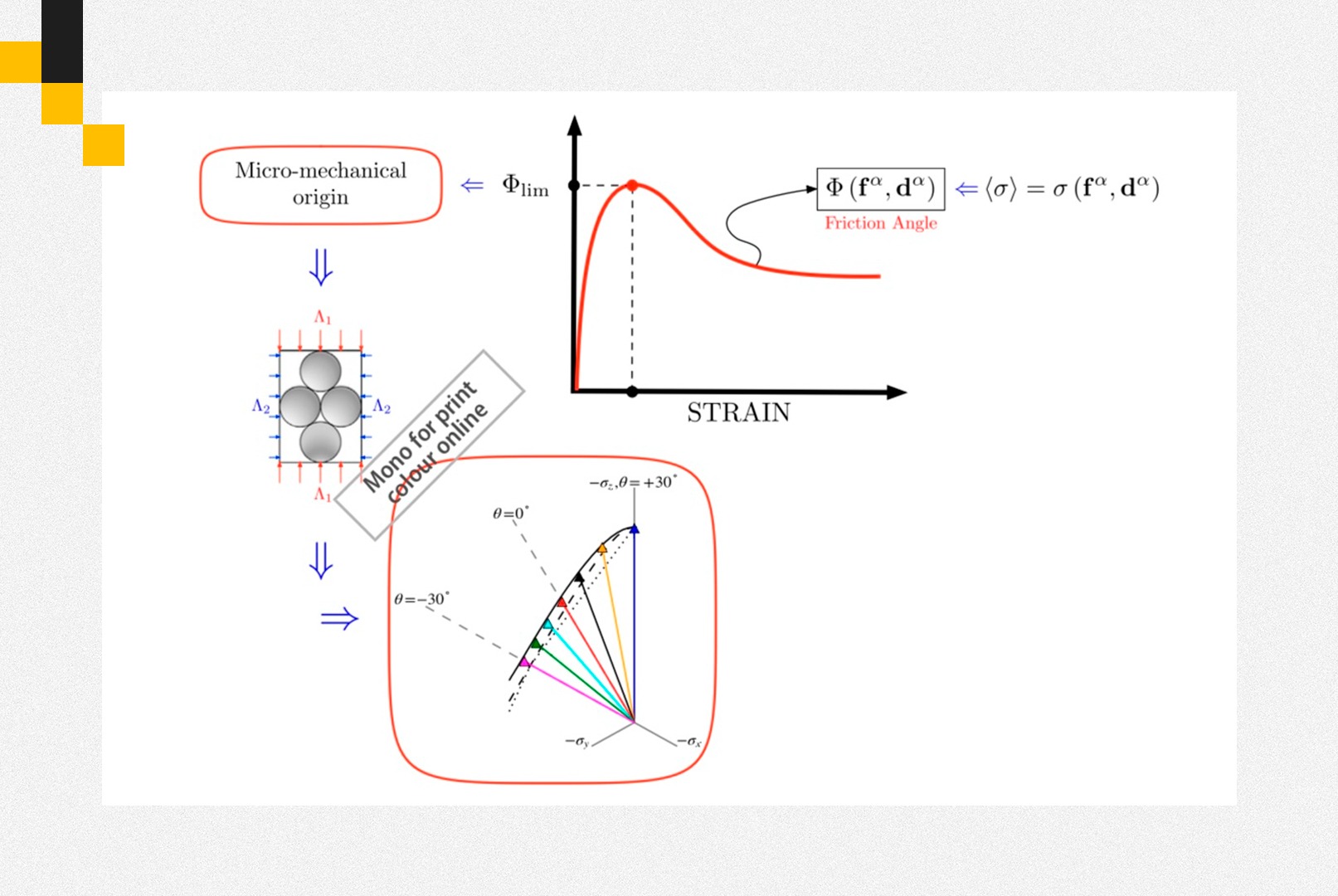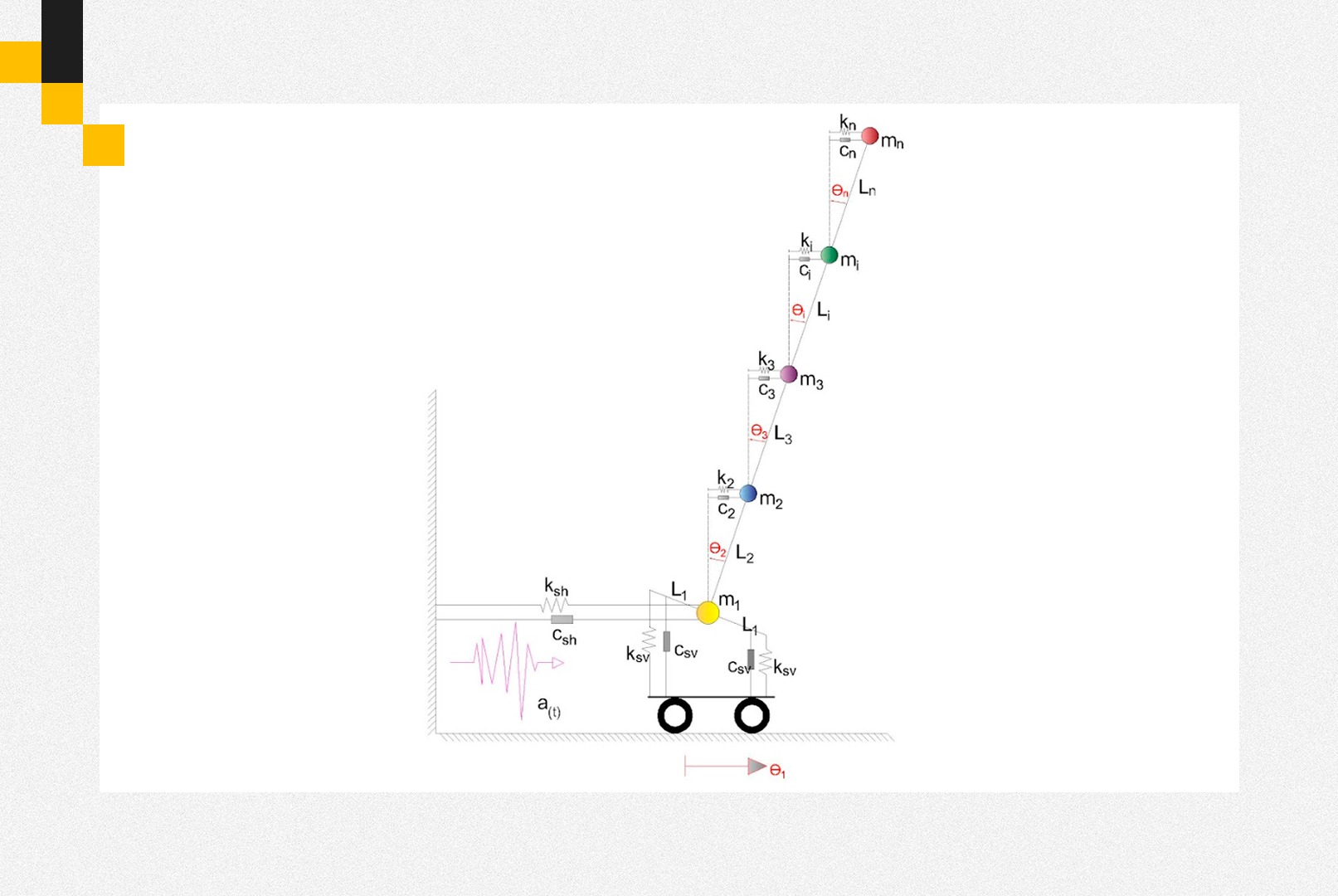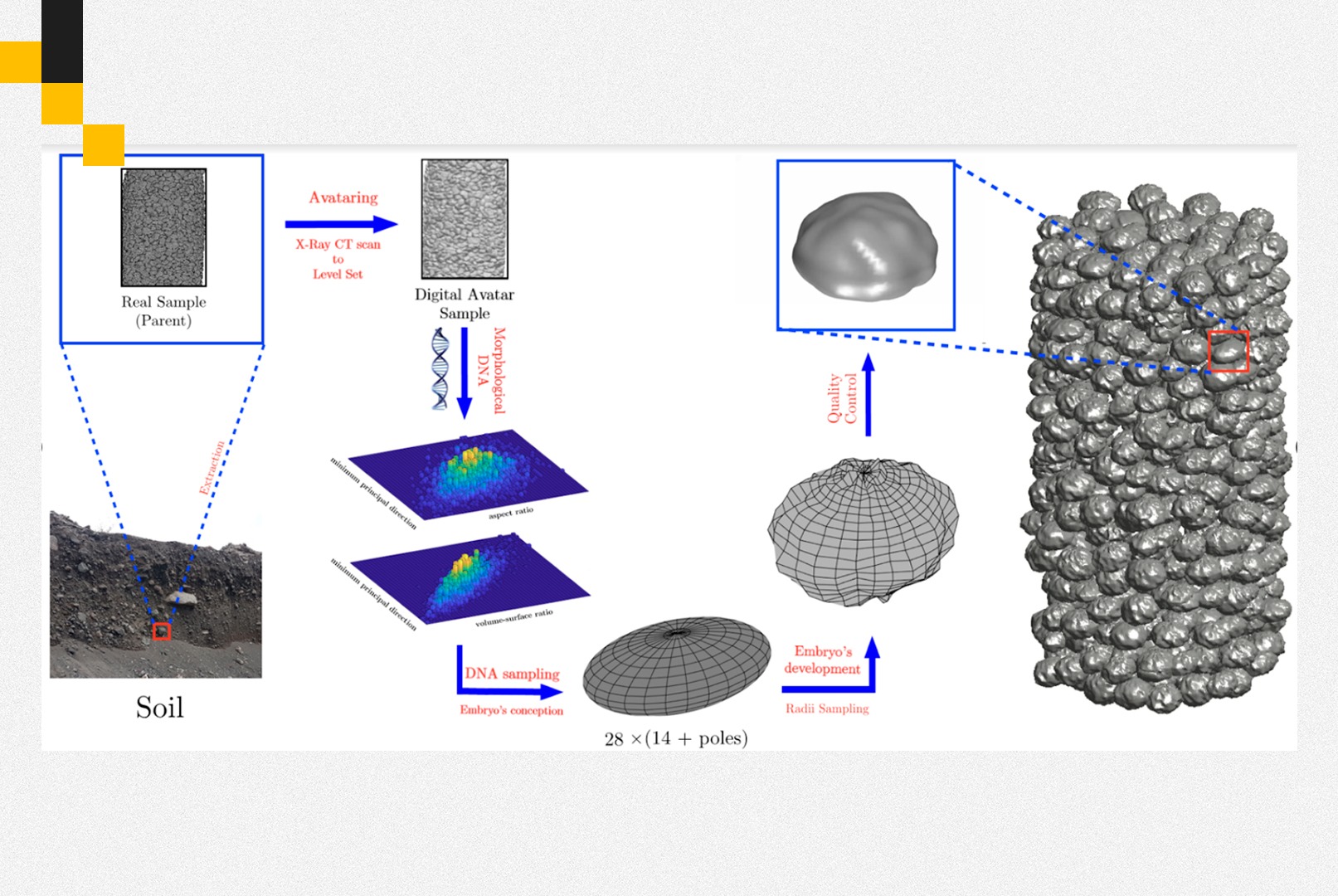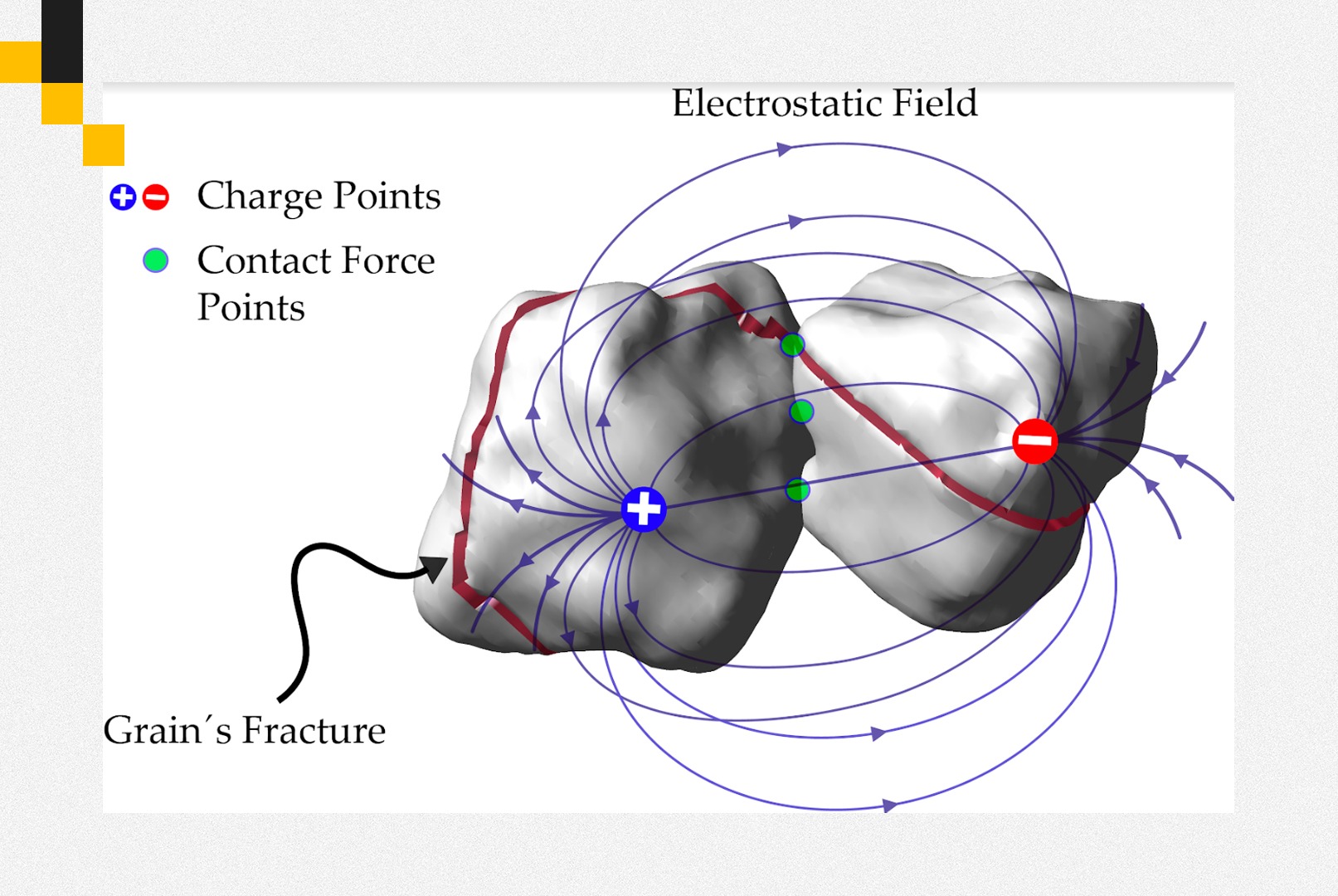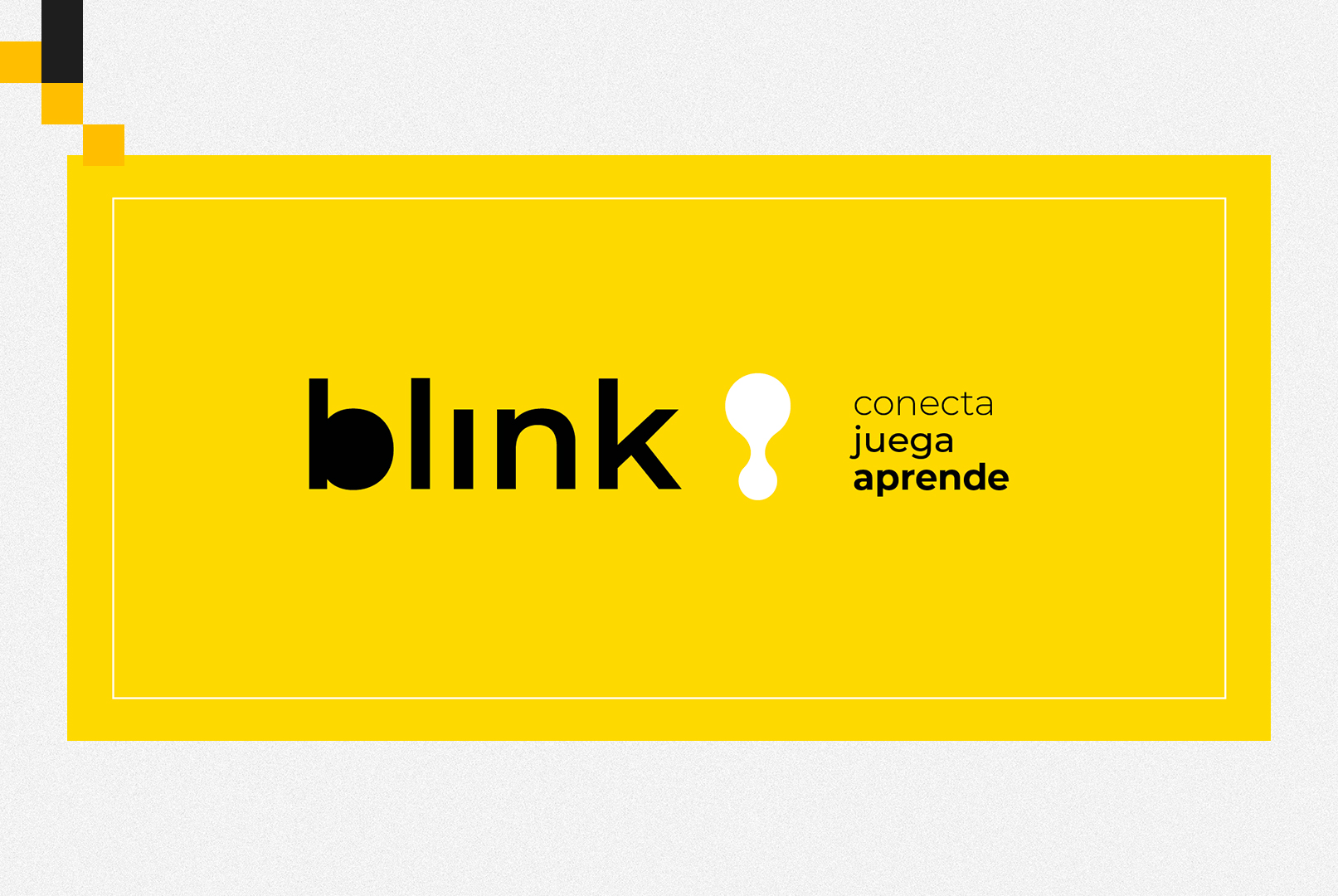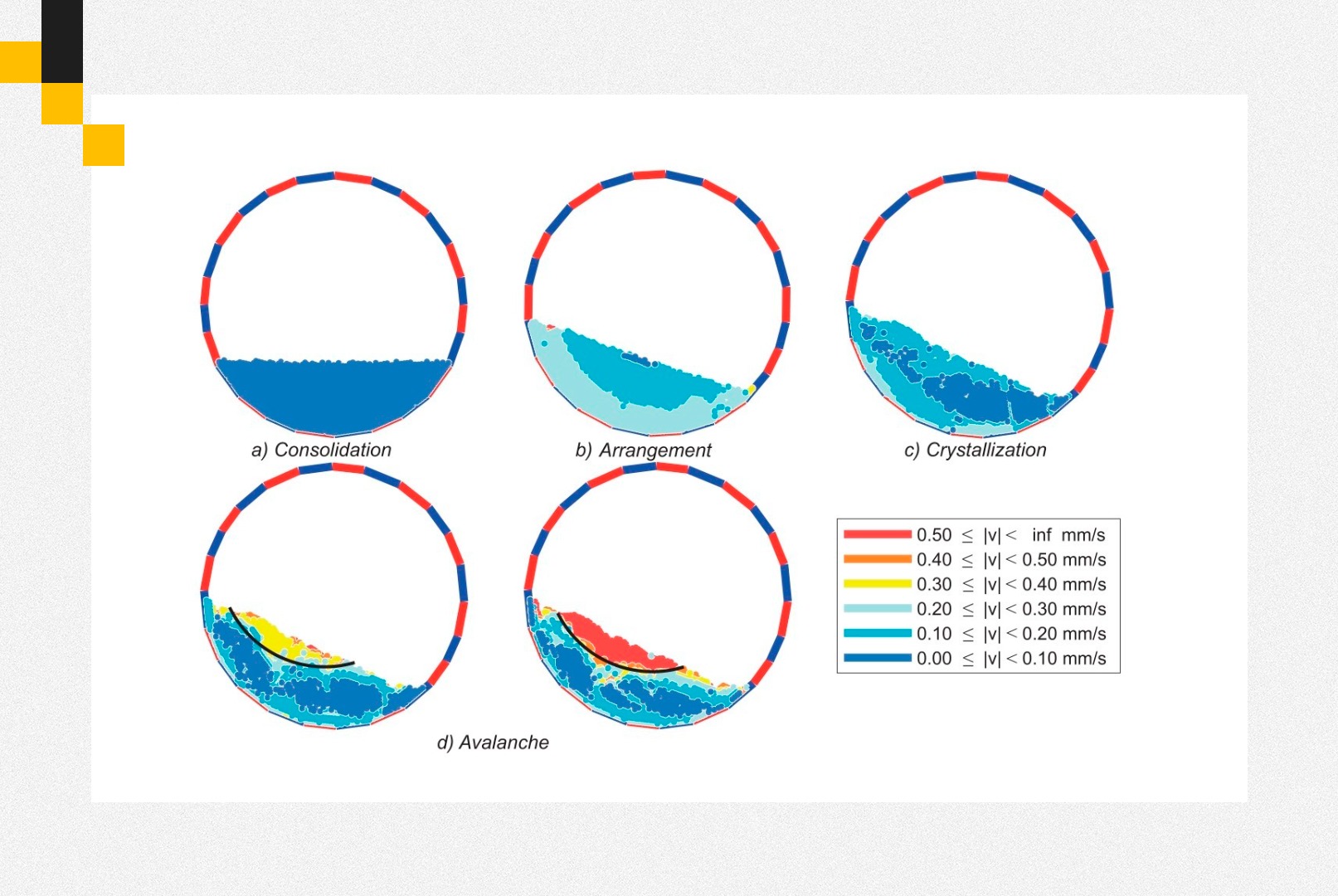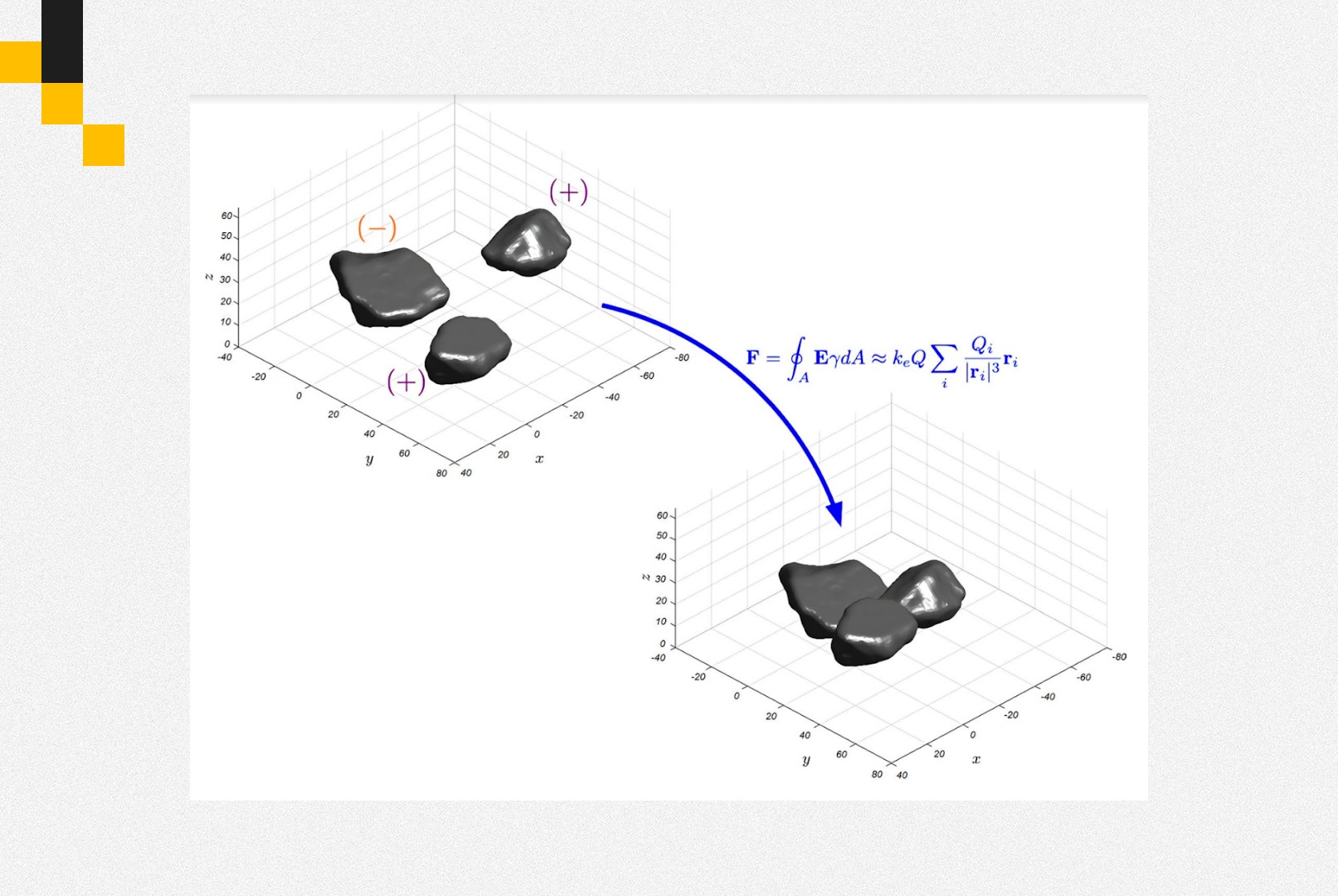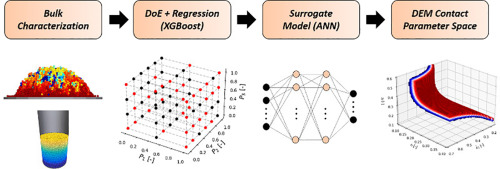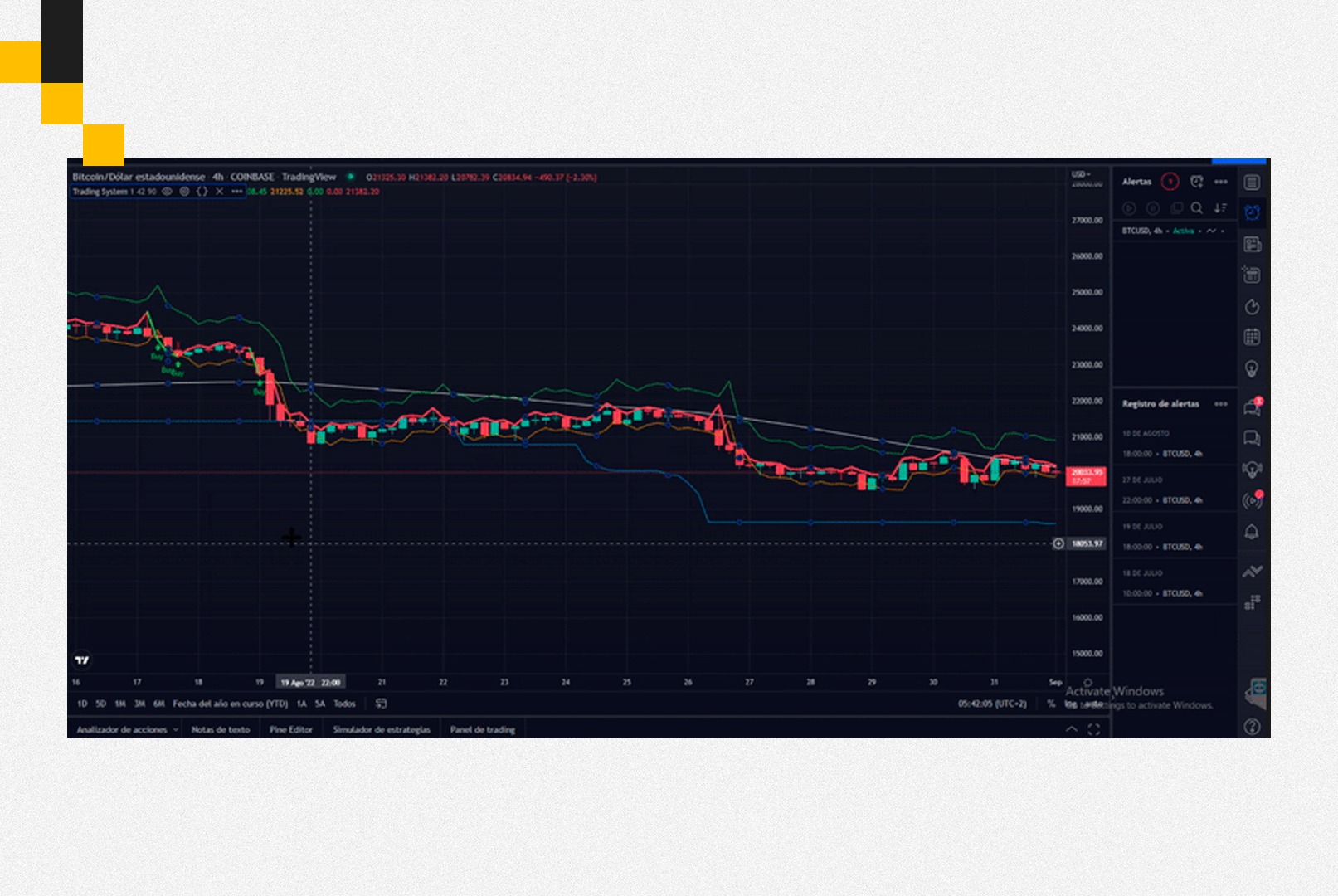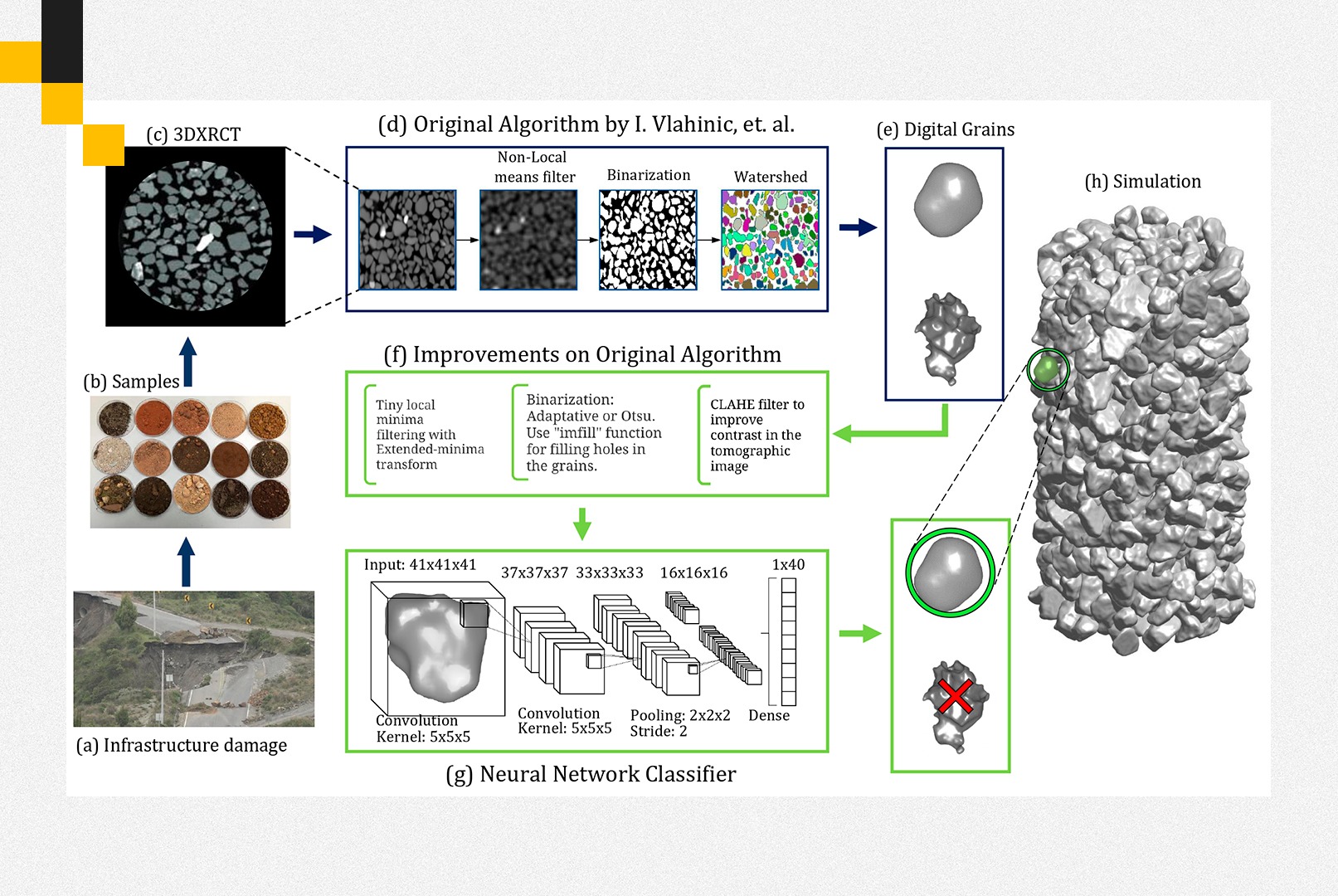
Project description
Introduction:
Image processing algorithms allow us to obtain digital grains from 3D X-Ray Computed Tomography (3DXRCT) preserving its morphology. These digital grains can be later used in simulations, however, not all the grains are correctly processed, presenting common errors such as oversegmentation or undersegmentation, and need to be discarded. With the aid of two additional filters (CLAHE and tiny local minima) to the image processing algorithm of Vlahinic, et. al., pre-processing and later segmentation is improved, also reducing oversegmentation. Even after implementing these filters, “bad grains” (grains that are incorrectly processed) are still obtained, requiring a manual classification that demands expert judgment to identify “good grains” correctly. Manual classification is a time-consuming task that needs previous training, with the possibility of misclassifying grains due to human error.
Paper link: https://www.sciencedirect.com/science/article/pii/S0266352X23002677
Description:
In this project, a Convolutional Neural Network (CNN) was implemented to reduce manual classification time, trained with previously classified “good” and “bad grains” from a soil sample, and evaluating it with typical metrics like accuracy, precision, recall and F1-score, reaching up to 90% of classification accuracy and reducing manual classification time by 95%. The base model was trained with digital level set avatars of Jaramijó sand grains (Ecuadorian soil), then, for other granular materials such as Øysand (Norwegian soil) and Hostun sand (French soil), transfer learning and training from scratch are used. Our approach allows us to locate “good” and “bad” grains in the 3DXRCT (with the calculation of its centroid), reconstructing the sample with the obtained “good grains” and using them for further simulations. “Bad grains” could be reprocessed in an attempt to make a one-to-one representation of the original sample, or to have more grains for the simulations.
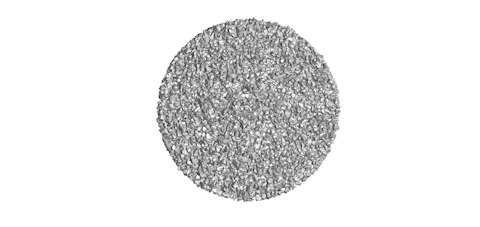
Benefits:
The CNN can be trained with other granular materials with techniques like transfer learning, reducing the manual classification time of processed grains obtained from the image processing algorithm. This reduction in time enables us to focus the efforts on studying soil mechanics in 3DLS-DEM computational simulations.
Execution time:
3 years.
Required equipment:
The CNN was developed and tested using the free cloud services hosted by Google Colab.
Probability of succes:
90%

